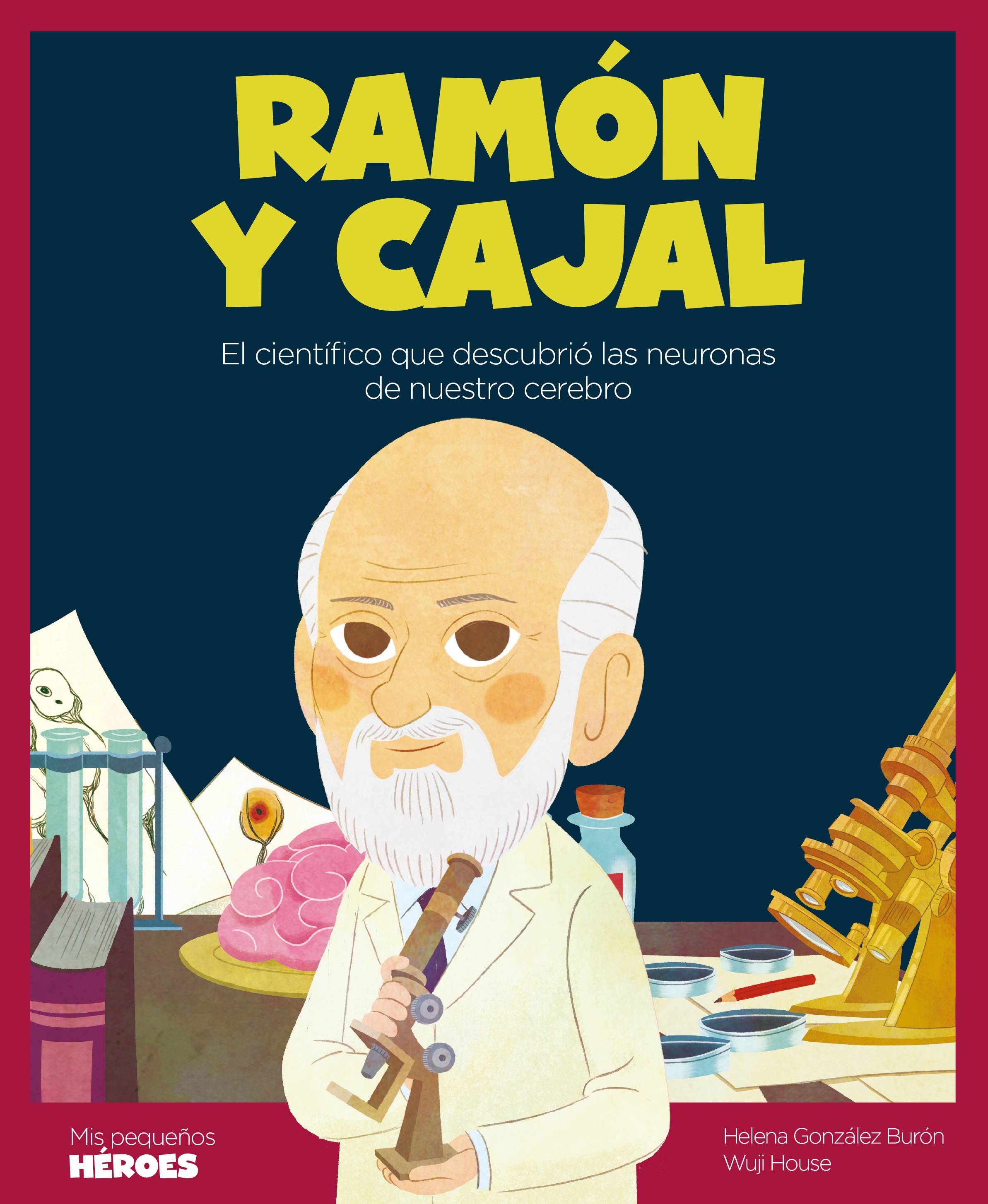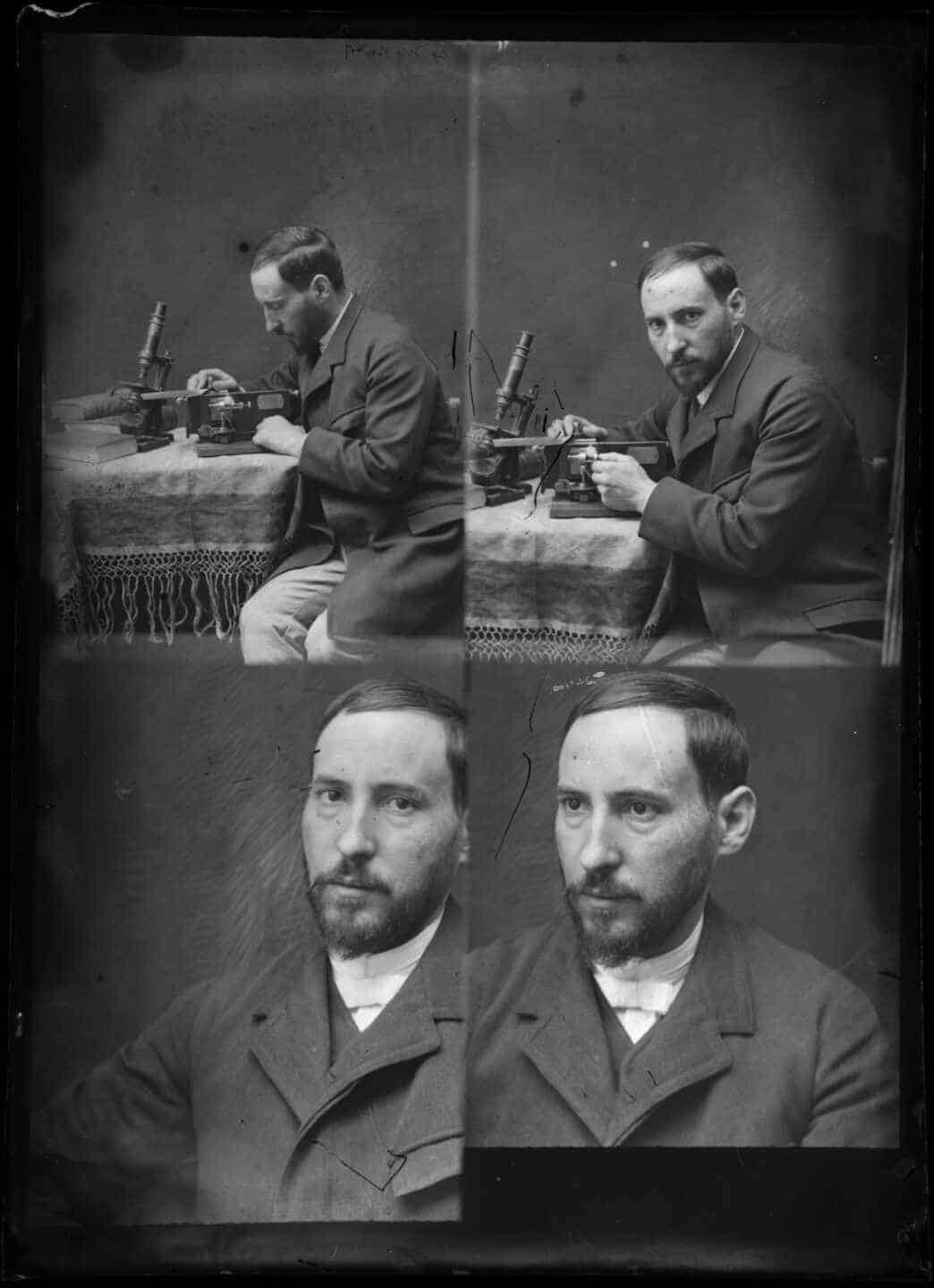
Los vicios que obstaculizan el éxito, según el padre de la neurociencia Cultura Inquieta
Camillo Golgi, who clung to the continuous-web theory, abused his Nobel acceptance speech to attack his younger co-laureate, Santiago Ramón y Cajal. Cajal behaved himself at the ceremony, but.

HISTORIA DE LA GEOLOGÍA Y BIOLOGÍA Ramón y Cajal, científico y patriota
Santiago Ramón y Cajal, (born May 1, 1852, Petilla de Aragón, Spain—died Oct. 17, 1934, Madrid), Spanish histologist who (with Camillo Golgi) received the 1906 Nobel Prize for Physiology or Medicine for establishing the neuron, or nerve cell, as the basic unit of nervous structure.This finding was instrumental in the recognition of the neuron's fundamental role in nervous function and in.

Santiago Ramón y Cajal. El padre de la neurociencia moderna Albert Mesa Rey Adelante España
Santiago Ramón y Cajal ( Spanish: [sanˈtjaɣo raˈmon i kaˈxal]; 1 May 1852 - 17 October 1934) [1] [2] was a Spanish neuroscientist, pathologist, and histologist specializing in neuroanatomy and the central nervous system. He and Camillo Golgi received the Nobel Prize in Physiology or Medicine in 1906. [3]

mis pequeños héroes, els meus petits herois, biografías para niños
January 9-March 31, 2018. Santiago Ramón y Cajal (1852-1934) was a pioneering Spanish neuroanatomist who, over the course of five decades, combined cutting-edge scientific research with consummate draftsmanship to create groundbreaking drawings of the human brain and other nerve tissues. In 1906, Cajal was jointly awarded the Nobel Prize.

Ramón y Cajal, Nobel y pionero de la fotografía
Santiago Ramón y Cajal is often called the father of neuroscience. He won the Nobel Prize for Physiology/Medicine in 1906 for his theory that became known as the neuron doctrine. Early Life and Education Santiago Ramón y Cajal was born in Petilla de Aragón in northern Spain on May 1, 1852. His mother's name was

Ramón y Cajal vs Golgi Ramón y Cajal wins!
Born in Navarra, the son of a doctor, Cajal was a rebellious artistic child, with an innate distrust of authority and an obsessive-compulsive proclivity. At 8, according to the catalog, he drew.

Santiago Ramón y Cajal El científico y el artista Brain Film Fest
Ramón y Cajal refinó la técnica de Golgi y, con los detalles obtenidos de las imágenes más nítidas, revolucionó la neurociencia. En 1906 él y Golgi compartieron el Premio Nobel.

La prodigiosa memoria histórica de Ramón y Cajal Agroicultura Perinquiets
Santiago Ramón y Cajal was still young when he came across the reazione nera, discovered by the Italian Camillo Golgi.Cajal became absolutely entranced by the fine structure of the nervous system this technique revealed, which led him to embark on one of the last truly epic endeavors in Modern History: the characterization of nervous cells, and of their organization to form the brain.

Ramón y Cajal los secretos de un genio América 2.1
Santiago Ramón y Cajal 1 May 1852 - 18 October 1934) was a Spanish doctor. He shared the 1906 Nobel Prize in Physiology or Medicine with Camillo Golgi for their work on the anatomy of the nervous system. Ramón y Cajal worked on thin slices of brain tissue which were laid on microscope slides and stained with silver. The stain was invented.

Queen Letizia Visits Ramon Y Cajal Editorial Stock Photo Stock Image Shutterstock
May 1, 1852 - October 17, 1934. Santiago Ramón y Cajal. Courtesy of the Cajal Institute, Spanish National Research Council or CSIC©. Santiago Ramón y Cajal, a Spanish physician and scientist, was the first to describe the structure of the nervous system with exquisite precision.

Santiago Ramon y Cajal, histologist Stock Image H418/0213 Science Photo Library
The pencil and ink depictions are not fantastical dreamscapes, but the brainchildren of Santiago Ramón y Cajal (1852-1934), the father of neuroscience and once an aspiring artist. Armed with a.

Santiago Ramón y Cajal biografía del médico español más célebre
Santiago Ramón y Cajal, "the father of modern neuroscience.". All images courtesy Cajal Legacy, Instituto Cajal (CSIC), Madrid. Fiction is, by definition, a world away from fact—but Santiago Ramón y Cajal, often heralded as "the father of modern neuroscience," used it to find objective truth. Cajal spent his days at the microscope.

Biografía de Santiago Ramón y Cajal Su vida al completo
In 1889, Ramón y Cajal took his slides to a scientific meeting in Germany. "He sets up a microscope and slide, and pulls over the big scientists of the day, and said, 'Look here, look what I.

Ramón y Cajal, el pionero de la fotografía en España que ganó un Nobel
H our after hour, year after year, Santiago Ramón y Cajal sat alone in his home laboratory, head bowed and back hunched, his black eyes staring down the barrel of a microscope, the sole object.

Cajal y la hipnosis una visión desconocida del científico universal Lanza Digital Lanza Digital
Abstract. Ramón y Cajal's studies in the field of neuroscience provoked a radical change in the course of its history. For this reason he is considered as the father of modern neuroscience. Some of his original preparations are housed at the Cajal Museum (Cajal Institute, CSIC, Madrid, Spain). In this article, we catalogue and analyse more.

Memoria gráfica de España. Santiago Ramón y Cajal
In summary, some years later, Santiago Ramón y Cajal, a decade younger, improved on Golgi's technique and determined that neurons are contiguous, but not continuous, and communicate across the.